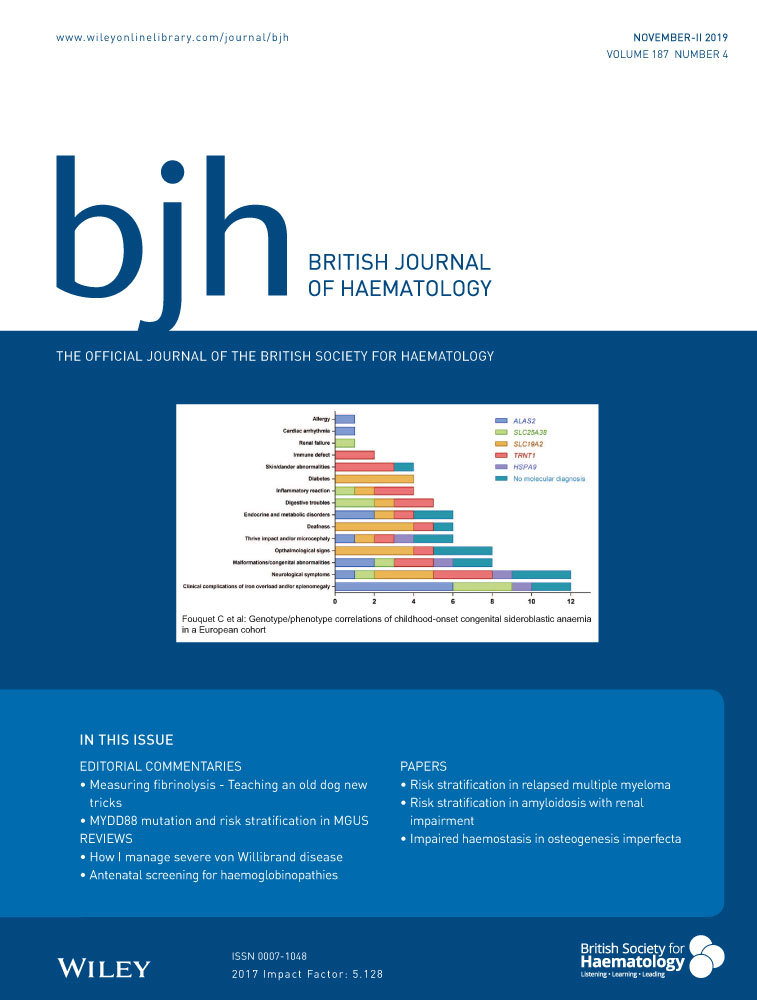A novel simultaneous clot-fibrinolysis waveform analysis for assessing fibrin formation and clot lysis in haemorrhagic disorders
Summary
Simultaneous evaluation of coagulation and fibrinolysis facilitates an overall understanding of normal and pathological haemostasis. We established an assay for assessing clot formation and fibrinolysis simultaneously using clot waveform analysis by the trigger of a mixture of activated partial thromboplastin time reagent and an optimized concentration of tissue-type plasminogen activator (0·63 μg/ml) to examine the temporal reactions in a short monitoring time (<500 s). The interplay between clot formation and fibrinolysis was confirmed by analysing the effects of argatroban, tranexamic acid and thrombomodulin. Fibrinogen levels positively correlated with coagulation and fibrinolytic potential and initial fibrin clot formation was independent of plasminogen concentration. Plasminogen activator inhibitor-1-deficient (-def) and α2-antiplasmin-def plasmas demonstrated different characteristic hyper-fibrinolytic patterns. For the specificity of individual clotting factor-def plasmas, factor (F)VIII-def and FIX-def plasmas in particular demonstrated shortened fibrinolysis lag-times (FLT) and enhanced endogenous fibrinolysis potential in addition to decreased maximum coagulation velocity, possibly reflecting the fragile formation of fibrin clots. Tranexamic acid depressed fibrinolysis to a similar extent in FVIII-def and FIX-def plasmas. We concluded that the clot-fibrinolysis waveform analysis technique could sensitively monitor both sides of fibrin clot formation and fibrinolysis, and could provide an easy-to-use assay to help clarify the underlying pathogenesis of bleeding disorders in routine clinical practice.
Conflict of interests
TM teaches a course endowed by Shire Japan Co. Ltd., NA is an employee of Sysmex Corporation. The other authors have no conflicts of interest.




